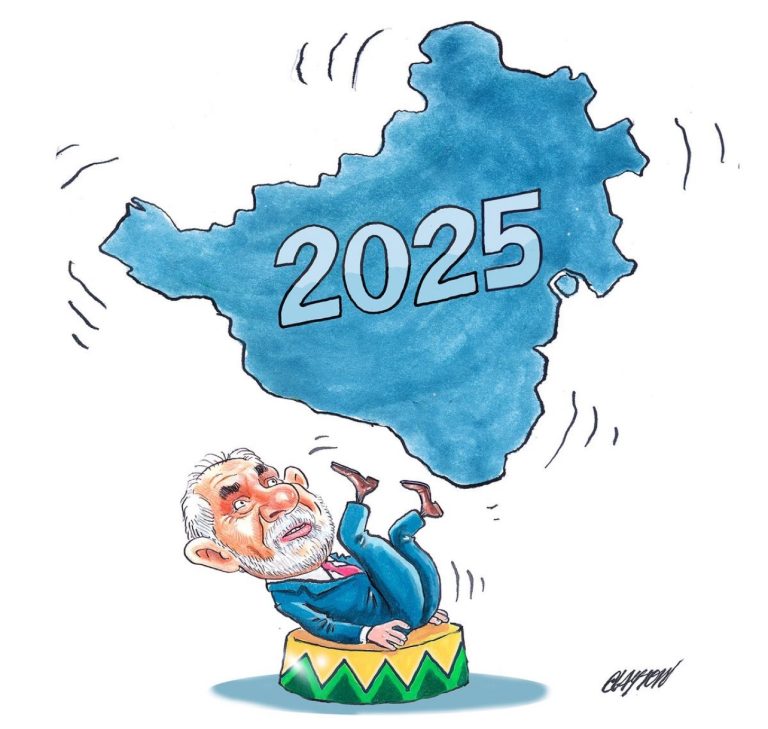Brazil’s Inflation Surge to 5.3% and Sky-High Credit Card Rates Signal Economic Trouble
BY HOTSPOTORLANDO NEWS
Brazil’s economy is teetering on the edge of a crisis as inflation has climbed to 5.3% in the latest mid-July reading, overshooting the Central Bank of Brazil’s target of 3% (with a tolerance range of plus or minus 1.5 percentage points). Compounding this economic strain, credit card interest rates have soared to staggering levels, averaging 440% per year for revolving credit and 195.6% for installment plans. As the Central Bank prepares to hold its benchmark Selic rate at a punishing 15%—a two-decade high—next week, conservatives see a troubling picture of fiscal mismanagement, government overreach, and an economy suffocating under high interest rates that crush consumers and businesses alike.
The inflation rate, reported by the statistics agency IBGE, edged up from 5.27% a month earlier, defying economists’ hopes for a slight decline to 5.26%. Driven by sharp increases in food and beverages (up nearly 8% year-on-year due to weather-related agricultural disruptions), health, personal care, and transportation (with gasoline prices spiking 10%), this persistent price pressure is squeezing Brazilian households. Meanwhile, credit card interest rates—among the highest in the world at 440% annually for unpaid balances and 195.6% for installment payments—pile additional hardship on consumers already grappling with rising costs. These rates, fueled by inflation but rooted in deeper structural flaws, make borrowing a near-impossible burden for the average Brazilian.
The Central Bank’s decision to maintain the Selic rate at 15%, following a 450-basis-point hike since September last year, reflects a desperate bid to tame inflation. Yet this aggressive tightening comes at a steep cost. High interest rates choke economic growth, discourage investment, and drive up borrowing costs across the board, including the exorbitant credit card rates that punish consumers who rely on credit for daily expenses. While inflation at 5.3% justifies the Central Bank’s hawkish stance, conservatives argue that the root causes of both inflation and sky-high credit costs lie in the government’s reckless fiscal policies, not just monetary measures.
Under President Luiz Inacio Lula da Silva, Brazil’s economic challenges have worsened. Lula’s vocal attacks on the Central Bank, labeling its 15% Selic rate “irresponsible,” deflect blame from his administration’s unchecked spending and stimulus programs, which fuel inflation and weaken the Brazilian real. A weaker currency, hitting record lows last December, drives up import costs, further stoking inflation and pushing banks to charge astronomical credit card rates to hedge against currency depreciation and defaults. The government’s recent fiscal package, meant to address ballooning public debt, failed to inspire market confidence, exacerbating economic instability. Conservatives contend that Lula’s focus on consumption-driven stimulus ahead of the 2026 elections only deepens the inflationary spiral, indirectly sustaining the high interest rates that ripple through to credit card costs.
Brazil’s credit card interest rates, averaging 440% for revolving credit and 195.6% for installment plans, are not solely a byproduct of the 5.3% inflation rate but are amplified by it. The high Selic rate, a direct response to inflation, sets a costly benchmark for banks, who pass on elevated borrowing costs to consumers. However, structural issues play an even larger role. Brazil’s banking sector, dominated by a handful of major players, lacks the competition needed to drive down rates. High default risks, with 6–8% of credit card balances typically unpaid, prompt lenders to charge punishing rates to offset losses. A 2023 law capping revolving credit debt growth at 100% of the original amount has done little to curb these rates, as banks exploit loopholes and the underlying cost of credit remains high. Inflation exacerbates these issues by increasing banks’ operational costs and fueling demand for credit, as Brazilians lean on cards to cover rising expenses for essentials like food and fuel.
Private economists now project inflation to linger at 5.1% in 2025, well above the Central Bank’s target, signaling deanchored expectations and eroding confidence in the bank’s ability to hit 3% by 2028. The Central Bank’s own forecasts are slightly more optimistic, predicting inflation at 4.8% in 2025 and 3.6% by 2026, but these hinge on sustained high rates and a cooling economy—conditions that further strain small businesses and families. The tight labor market and resilient economic activity, while positive, keep demand-driven price pressures alive, perpetuating the cycle of high inflation and costly credit.
For conservatives, the solution lies in disciplined fiscal policy, not more government intervention. Lula’s administration must slash bloated public spending, reform inefficient pension systems, and address structural barriers like banking concentration to lower credit card rates and ease borrowing costs. Broadening the tax base and increasing progressivity, as proposed, could help stabilize public finances, but only if paired with spending cuts that restore investor confidence and strengthen the real. Without these reforms, Brazil risks a vicious cycle of high inflation, crippling interest rates, and stagnant growth. The 440% credit card rates and 15% Selic rate serve as stark reminders of the cost of fiscal irresponsibility, leaving ordinary Brazilians to bear the burden of an economy on the brink.


